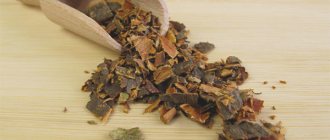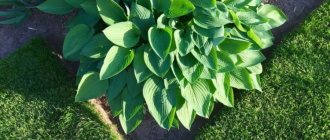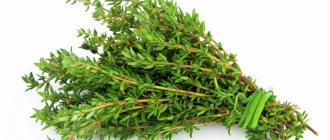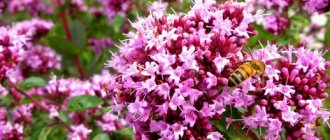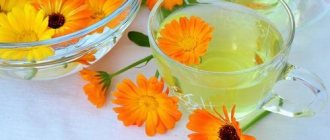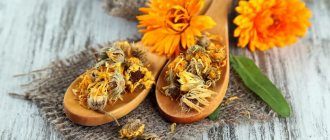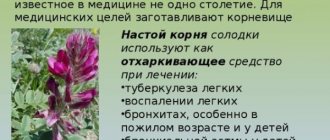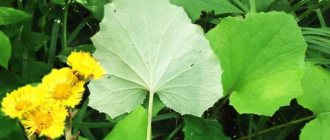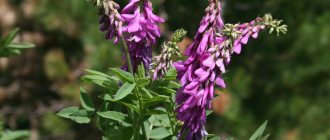Home / Cooking / Ingredients and products
Back
Published: September 20, 2019
Reading time: 6 min
0
2037
5 / 5 ( 3 voices)
Sage - the medicinal properties of this plant have been known for a very long time, but before using herbs for prevention or treatment, it is also necessary to study contraindications. It is a medicinal herb, known for generations, which in old times was even attributed magical properties. What does all of this mean? What is its magical effect? We recommend that you read our article.
In ancient times, sage was considered a magical and wonderful herb, symbolizing longevity. Even during the revival, it was believed that ingesting its leaves with written spells would protect him from demons and heat, and whoever ate it in May would live forever.
Today, sage is grown throughout Europe. Due to its properties, it is used in medicine, cosmetics and gastronomy as a spice plant.
- What is sage and what does it look like?
- Composition of Salvia officinalis When to collect sage and how to dry
- How to use sage oil
- How to brew and drink sage tea
Photo of the plant
For those who like to prepare medicinal herbs themselves, we have prepared photographs that will help you find the plant you need. Bright and dense flowers with a spicy aroma are the hallmark of all types of sage. It is worth noting that there are so many subspecies that you can compare two shoots and not see any similarities between them, although they will both be the same plant species. To avoid mistakes, collect the most popular subspecies.
Salvia officinalis: description of the species
There are many types of sage in nature. But medicinal sage is the most valuable of them. It can be distinguished by its straight stem, which grows up to 70 cm in height. The leaves of the plant are grayish-green, slightly fluffy. The plant blooms with blue-violet flowers in early summer.
At the beginning of flowering, the leaves are collected; they have beneficial properties. The hand-picked leaves are dried and spread out in the attic. You can use a dryer.
Useful substances in the composition
The benefits of a plant or drug must be confirmed by its chemical composition. The study of salvia has led scientists to the conclusion that it has one of the richest compositions among natural herbs.
From thousands of varieties of substances, we have selected the most useful ones and highlighted them for your reference. You will be surprised how versatile this product is and how many medical problems it can eradicate.
- Vitamins (A, E, K and PP). Vitamins increase a person’s immunity, his general physical and psychological condition.
- Ursolic acid. A unique component that tones the muscular system, improves metabolism, and reduces the amount of subcutaneous fat. At high concentrations, this acid successfully fights various tumors and inflammations. Used to treat melanoma in developed countries of the world. Heals hair.
- Salvin. A harmless antibiotic of plant origin that can suppress the development of bacteria in the human body. Does not cause stomach upset or reduce the immune system.
- Uvaol. A natural substance that blocks inflammatory processes. It has diuretic properties, so this plant is not recommended for kidney diseases.
- Chloregenic acid. A natural antioxidant similar to what is found in tea. Increases the tone of the whole body. Blocks viral or fungal development.
- Linoleic acid. Also known as omega-6 essential fatty acid.
- Useful chemical trace elements. Potassium, magnesium, iron, zinc, phosphorus, etc.
Sage essential oil is extracted when the seeds ripen. At this time, it contains the strongest concentration of the listed substances. This oil is an excellent alternative to live salvia because it does not spoil and takes up less space.
Medicinal properties of sage
We learned what rich composition nature has endowed salvia with. It's time to figure out how to use this composition for medical purposes. How exactly does this amazing herb work, and how effective will it be for certain ailments?
In addition to the medicinal properties presented, sage has the property of strengthening the body’s protective function. Therefore, its use is recommended for those who do not have symptoms of disease.
- Analgesic effect. This property of salvia oil especially helps in treating the throat. Most topical lozenges contain this herbal ingredient for this reason.
- Expectorant effect. This property of sage is also used in the treatment of throat. It helps a person quickly get rid of mucus in the nasopharynx. Recovery is faster; dead cells of viruses and bacteria do not become the foundation for the division of new cells.
- Anti-inflammatory property. Because of this effect, the plant is used in all fields of medicine. In dentistry for sensitive gums, in dermatology for abscesses and abrasions, for diseases of the ENT organs.
- Antipyretic. The effect is not pronounced, it is not paracetamol. But it can help lower the temperature. It relieves especially well not the fever itself, but the symptoms.
- Regenerating effect. Salvia leaves are applied to fresh wounds. Its juice stops bleeding and gently scars the wound, if it is not large.
We recommend not using sage or sage oil as the sole method of treating colds and other illnesses. Combine with other products to achieve the best results.
Sage: contraindications and side effects
It may seem that the action of the herbs is so gentle that it does not cause any negative effects.
But before using sage for treatment, it is worth knowing that there are contraindications to the use of sage officinalis.
Sage should not be taken during pregnancy or breastfeeding due to decreased lactation. Sage may reduce the effect of anticoagulants.
Too much sage in the diet or supplements can disrupt the body's natural harmony, so when consumed in excess, sage can cause side effects, especially if taken in large doses over a long period of time - it can be toxic.
Consuming sage over a long period of time and in large quantities can contribute to nausea, vomiting, or even dementia.
Do not give the infusion to children under 3 years of age.
Acute gastritis is also a contraindication for use, since the essential oils contained in this plant can further irritate the gastric mucosa.
Sage is also not used for people with epilepsy as it may cause seizures.
With sage, you must be very careful when taking antidepressants and other medications that affect the nervous system.
Additionally, excessive consumption of infusions of this herb can lead to imbalance in the body, so you should use this herb in moderation.
Attention! Leaves, flowers and essential oil used in excess can have toxic effects on the nervous system. Sage is twice as toxic as wormwood. Doses should always be determined by your doctor.
The use of sage in folk medicine
Previously, we looked at the beneficial substances in sage and the areas of application of this meadow grass. But is this knowledge enough? On the one hand, it’s enough, you know that the juice of the plant is in tablets for the throat, and it can be applied to the abrasion. On the other hand, there is a branch of medicine that can use salvia more effectively - traditional medicine. When it comes to traditional medicine, people are immediately divided into two opposing camps: connoisseurs and opponents of traditional methods of treatment. In the case of sage, debate is pointless - it is used by both traditional healers and industrial pharmacists. This means that this herb is a unique source of health that is recognized by all medical subjects.
For women's health
The female body is demanding regarding environmental conditions, nutrition and stress. Therefore, sometimes it can fail. Sage has proven itself to be a good helper for the female body, thanks to the content of phytohormones.
- For infertility. If the problem is not on the physical level, when the uterus is not functioning, then sage decoction with constant use will increase the chances of getting pregnant. Phytohormones normalize the fertilization process for women.
- During menopause. There comes a period in a woman’s life when she does not experience sexual attraction to a man and loses her functions. Salvia decoction will also help in this case, thanks to the same phytohormones.
- To stop lactation. After the birth of a child, a woman's breasts experience extreme stress for several months. Since sage relieves swelling and relieves pain, doctors recommend that young mothers occasionally drink tea with the addition of salvia to stop lactation in order to stop milk production and return the breasts to their original form.
- To conceive a child. If from a physical point of view there are no obstacles to conception, then daily consumption of sage decoction or infusion will increase the likelihood of pregnancy. This is explained by cleansing the body and toning the uterus.
- To rejuvenate the body. This also applies to men, but they are less puzzled by this issue. If you drink a light infusion of sage daily on an empty stomach, then after a week you will notice an improvement in the condition of your skin and hair. This procedure should be carried out every day for a whole month.
- During pregnancy. It should not be used internally; the child’s body may react with an allergy; external use is permitted.
In general, women should pay close attention to this plant, since it can qualitatively improve sex life, the process of motherhood and a woman’s appearance.
In the treatment of various diseases
We invite you to familiarize yourself with the list of diseases that can be treated with sage and products made from it. Many people mistakenly believe that this herb can only be used for viral diseases.
- For throat diseases. Due to the fact that salvia contains such a natural component as Salvin (an antibiotic), a sage decoction or tincture will contribute to a quick and harmless recovery.
- For diseases of the oral cavity. The antiseptic properties of salvia quickly respond to viral infections of the oral cavity. Decoctions and alcohol-containing infusions will help you with this.
- For skin diseases. Fresh sage juice has a strong antiseptic and analgesic effect and can disinfect shallow cuts. burns, pimples and redness. For the same purposes, use salvia oil if you don’t have a fresh plant on hand.
- For gastrointestinal diseases. This plant will cope with all manifestations of indigestion by normalizing the functioning of the gastrointestinal tract. Infusion is ideal.
- For any inflammation. A natural antiseptic, that says it all. Inflammation in the oral cavity or intestines, it doesn’t matter, the decoction goes through all stages of digestion and heals the organs. External inflammations such as abrasions can be treated with sage oil or fresh juice.
As you can see, there are a lot of vectors for using salvia, so we strongly recommend that you have at least dried leaves or concentrated oil in stock.
In cosmetology
They say that beauty requires sacrifice, but not in our case. All you need to maintain your beauty with sage is enthusiasm and a little patience.
- For hair. Ursolic acid in our plant penetrates deep into the hair follicle and skin, relieving a person from flaking. Simply replace every other shampoo you wash with sage infusion.
- For face. Salvia ice works best for skin tone. Brew sage in the same proportion as regular tea. Let it brew and pour into an ice container. Wipe your skin with prepared ice once a day. For circles under the eyes, do the same thing, only without creating ice. Wipe the skin under the eyes with cotton pads soaked in a weak infusion. Against acne (blackheads, rashes), wipe your face every evening with oil or a light infusion of sage. As you remember, it relieves inflammation and kills germs on the face.
Well, nothing complicated. Try to choose for yourself the most interesting methods of maintaining female beauty and do not abandon this matter. Remember that your appearance must be constantly maintained in good shape.
Folk recipes
Folk remedies are varied. Every nation has recipes in unlimited quantities. Each home may have its own unique recipe for sage infusion, tea or wine. If you want to combine and supplement the ingredients, then this is not forbidden. There can be no right or wrong way of cooking, since all this was invented by people. Let's look at the main methods of creating medicines, which are the most popular among all methods of preparing sage.
Decoction
Decoctions occupy a dominant position in folk remedies. They are easy to prepare, effective and concentrated. The decoction is indispensable for colds, when a person needs a hot medicine.
- For half a liter of water, take two tablespoons of dried leaves.
- We put it on fire.
- Bring to a boil and quickly remove from the stove so that the broth does not lose most of its beneficial properties when boiling.
- Cool until comfortable so as not to burn your lips and organs.
- You can drink or gargle.
The frequency and volume of consumption of the decoction depends on the disease. For cough, you should drink the decoction once a glass before going to bed. If you have stomach problems, it is better to take it more often, but in smaller quantities.
Infusion
It differs from a decoction only in the method of production. The infusion retains all its medicinal qualities because it is not subjected to heat treatment.
- We need two heaped tablespoons of salvia leaves per half liter of water.
- Leave in a warm, dry place for 3-4 days. A strong infusion will take a week.
- The medicine is ready for use.
It is preferable to take the infusion for diseases of the gastrointestinal tract, since it cannot harm the internal organs with high temperatures. When the stomach is not in order, it reacts strongly to it.
Alcohol extract
A special form of medicine that should not be given to children, but can and should be consumed by adults. The recipe does not require any specific skills from you.
- Take dried or fresh sage leaves and place them in a deep container.
- Fill with alcohol or vodka so that the leaves are completely immersed in alcohol.
- Leave for 2-3 weeks in a cool, dry place.
- Add alcohol tincture to tea.
The medicine turns out to be concentrated, it is simply not recommended to drink it. Also, you should not drink the extract to treat the gastrointestinal tract; alcohol can cause irritation, only for acute respiratory viral infections and colds.
Tea
This is an extremely simple method of preparing a healthy drink. Can be used for disease prevention or for enjoyment, instead of regular tea and coffee.
- For a 200 ml mug. boiling water we need a teaspoon of dried salvia leaves.
- Brew for 3-5 minutes.
- Drink at any time of the day without restrictions. Add a slice of lemon or orange peel. There is no such thing as too much Vitamin C.
You can add other herbs and infusions to this tea. Cinnamon, nutmeg or chamomile work well. Whoever likes it more.
Sage wine
The preparation method is very similar to the alcohol extract. The difference is in the base of the tincture; instead of alcohol, white wine is used. The medicine turns out softer and more aromatic.
- We take one liter of white wine, not fortified.
- Add 10-150 grams of salvia leaves to it.
- Leave for two weeks in a dry room.
- You can drink in small sips to treat viral, bacterial diseases, as well as gastric disorders.
Sage wine is an original product; it is not customary to add it to other drinks, like an alcoholic extract. It is not recommended to give to children.
Sage as a seasoning
The aromatic smell and spicy, bitter-astringent taste of sage have long been valued by chefs around the world and are used in many recipes. Sage adds flavor to dishes and adds a spicy note to the taste.
As a rule, the plant is used in cooking in the following forms:
- powder from dried sage leaves - added to various hearty dishes and sauces;
- fresh young leaves and unblown tops of shoots - to obtain a subtle aroma of fish and vegetable dishes;
- fried fresh leaves - added to various sandwiches and hamburgers.
Sage can be used as a standalone herb (for example, in hearty pies, cheese snacks) or as one of the components in a mixture of herbs. The dry spice goes well with oregano, marjoram, juniper, rosemary, thyme and oregano, as well as bay leaves, garlic and onions.
The only group of foods that sage cannot be combined with are mushrooms, since the seasoning completely ruins their taste. Otherwise, the range of products that spice can improve is very wide:
- Meat dishes (especially beef and veal) and poultry, including minced meat;
- Fish dishes (for fatty or dietary varieties without a pronounced taste);
- Hearty, vegetable and bean soups;
- Cheeses (mixed with a small amount of sage powder) - curd, processed and hard;
- Egg dishes;
- Vegetable dishes;
- Baked goods – various types of bread (flatbread, baguettes, preparations for burgers and pizza), biscuits, filled pies (cabbage, meat, rice and egg);
- By-products;
- Marinades - sage is added to liquids for pickling or pickling vegetables, fish, lard, some fruits and berries;
- Desserts – milk and fruit;
- Drinks – milk and fermented milk, tea, beer, wine, sweet alcoholic drinks.
Important! In order to overpower the taste of the dish and not cause bitterness, it is necessary to clearly measure the amount of spice added. For the same purpose, sage should be added to the dish at the very end of cooking, unless otherwise indicated in the recipe.
Nowadays, the seasoning in question is easy to purchase in many grocery stores, but it is also not difficult to prepare it yourself . To do this, sage leaves collected during flowering are thoroughly washed with cold water and dried in a dark, ventilated room, then crushed to powder and stored in a cool place in an airtight container.
However, how can you replace sage in cooking if for some reason it is not available? A suitable replacement is one of the herbs with which the spice is combined:
- thyme;
- marjoram;
- savory;
- rosemary.
These seasonings can be used in the same quantities as sage. They will give the dish a similar aroma and taste.
Sage-based pharmaceutical products
In industrial medicine, it is customary to use sage for only two purposes: treating the throat and skin diseases. It follows that the key pharmaceutical drugs are: tablets for treating the throat and clary sage extract for the skin. The small range is compensated by the quality of the drugs. They really deserve the buyer's attention. Many advertised acne treatments contain sage.
Essential oil
It is obtained during the ripening period of the plant seeds. Used in the field of dermatology. There are domestic and imported drugs. Main Application:
- For cuts, wounds and abrasions. Natural antiseptic properties.
- For acne and skin redness.
- For external inflammation of the skin and soft tissues.
Oil production technology does not change from manufacturer to manufacturer. The packaging and investments in the advertising campaign differ, so buy the cheapest one, you can’t go wrong.
Lozenges
Tablets are already represented on the market much more widely. Here you should choose based on the composition of the tablets and personal preferences. We recommend buying regular tablets called “Sage”.
- They are the most affordable. No advertising campaign, no overpayment.
- They are natural, without chemical additives. Contains real plant extract.
- Reviews about the drug for treating the throat are the most positive.
Advertising is not always our friend; because of it, people do not even know about the existence of such wonderful tablets, which are not inferior in effectiveness to expensive imported analogues.
List of tablets and lozenges
For adults and children, pharmacies offer a wide selection of sore throat remedies. Manufacturers are different, but the active ingredients of the lollipops are the same. Medicine from any company for diseases of the upper respiratory tract must be used in conjunction with other drugs, taking into account contraindications and possible side effects.
Tablets from NATUR PRODUKT
Widely used in the treatment of ENT diseases. They have proven their effectiveness. Active ingredients: sage oil and its extract. The drug has a pronounced antimicrobial, anti-inflammatory, and expectorant effect.
The drug from Evalar "Sage"
Helps well with dry, irritating cough. Reduces sore throat when swallowing. It includes:
- sage extract;
- sage oil;
- hesperidin;
- vitamin
The drug "Evalar" is prescribed from the age of 14. The course of treatment lasts 5 days. The daily norm is 4 tablets. One pack is enough for the entire treatment period.
Lollipops from Doctor Theiss
Sucking lollipops for adults and children over 12 years old. They are produced in Germany. The maximum course duration is 14 days. The daily norm is 3-5 tablets. After resorption, do not drink water or eat food for about 40 minutes.
Lozenges from "Verbena"
Children are prescribed from 3 years of age. They contain sugar, so they are contraindicated for people with diabetes. Verbena lozenges are available in different flavors. Active ingredients: sage oil and extract. They relieve pain well, eliminate soreness, and freshen breath.
See also
Instructions for the use of drops and nasal spray Rinostop for adults and children, analogues and dosage
Read
"Green Doctor"
Prescribed for tonsillitis, laryngitis, pharyngitis from 5 years of age. Available in the form of tablets or lozenges. The composition of both forms is identical:
- sage extract - 12.5 mg;
- sage oil - 2.4 mg.
Diabetics should take lozenges with caution as they contain sugar. One lozenge contains 2.4 g.
Contraindications for use
There are several circumstances under which it is not recommended to treat with this plant or consume it as food. There are not many of them, but we must report them.
Contraindications in medicine are mandatory; it is better not to take risks when it comes to health.
- The plant is a mild diuretic; if kidney disease worsens, avoid it for a while.
- Not recommended for thyroid diseases.
- During pregnancy, do not take orally (external use is allowed and recommended).
- Avoid salvia if you have polycystic disease.
There is also such a thing as individual intolerance. If after using any medicine based on anything you experience discomfort, it is better to abandon it.
Regime and rate of consumption per day
The lollipops have instructions for proper use. There is no need to chew it, you just need to keep it in your mouth, and if you dissolve it, then slowly.
For adults
An adult with a sore throat can dissolve no more than 6 tablets per day. The interval between doses is 2 hours. You are allowed to take no more than one lozenge at a time. The duration of administration in days depends on the severity of the disease and individual tolerance of biologically active substances.
For a child
It is impossible to explain to a child under 3 years old the rules for using sage tablets; he perceives them as candy. They chew, swallow, but do not suck. It makes no sense to use lollipops for treatment in children under 5 years of age.
The regimen for taking lozenges for resorption is shown in the table.
| Age (years) | Quantity per day (pieces) | Interval |
| 5-10 | 3 | 4 |
| 10-15 | 4 | 3 |
| 15 and older | 6 | 2 |
You can use medicinal lozenges to treat your throat for a week.
During pregnancy
A herbal remedy for colds based on sage can be harmful to pregnant women. In the first months of pregnancy, its components can provoke increased uterine tone, and this can lead to miscarriage.
The extract contained in the drug can affect a woman’s hormonal levels and her blood pressure. To eliminate these risks, the throat during pregnancy should be treated with other medications.
Breastfeeding women should refrain from consuming lollipops.
